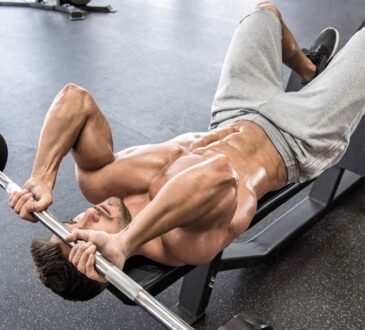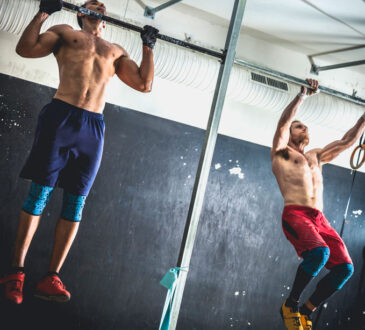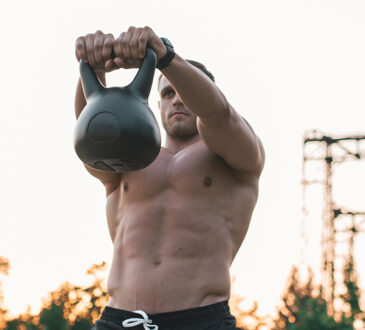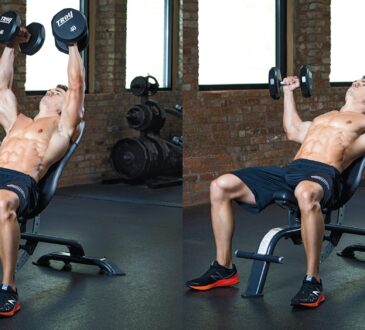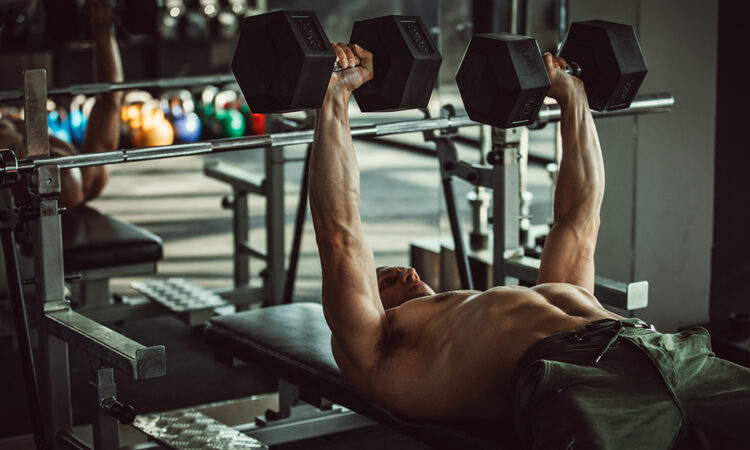
If you were allowed to train just one area of the body, you¡¯d be hard pressed to choose a more important area than the?shoulders and traps. That said: As any baseball pitcher can tell you, overworking the shoulders is a very real possibility, so we¡¯ll be careful to open and stretch as part of any?shoulders workout.
After all, the shoulders not only carry a huge workload in everyday life¡ªthey call it ¡°shouldering a burden¡± for a reason¡ªbut also play a key role in overall?posture and alignment. That¡¯s especially a concern in our modern, sedentary culture, when all of us spend too much time hunched over computers and behind steering wheels. We need to take preventative action to keep our shoulders from rounding permanently, thus contributing to muscle dysfunction from head to toe. Plus, a pair of powerful, properly aligned shoulders gives you a strong overall look. And unlike most people, who lose height over time as they shift forward, you¡¯ll literally stand tall with a big, functional set of shoulders.
We¡¯re going to do five?supersets?of two exercises each. Do one set of the first exercise, then move to the next exercise without resting. Rest only after the second exercise in each superset. Do each superset twice in total before moving on to the next superset.
?
1 of 5
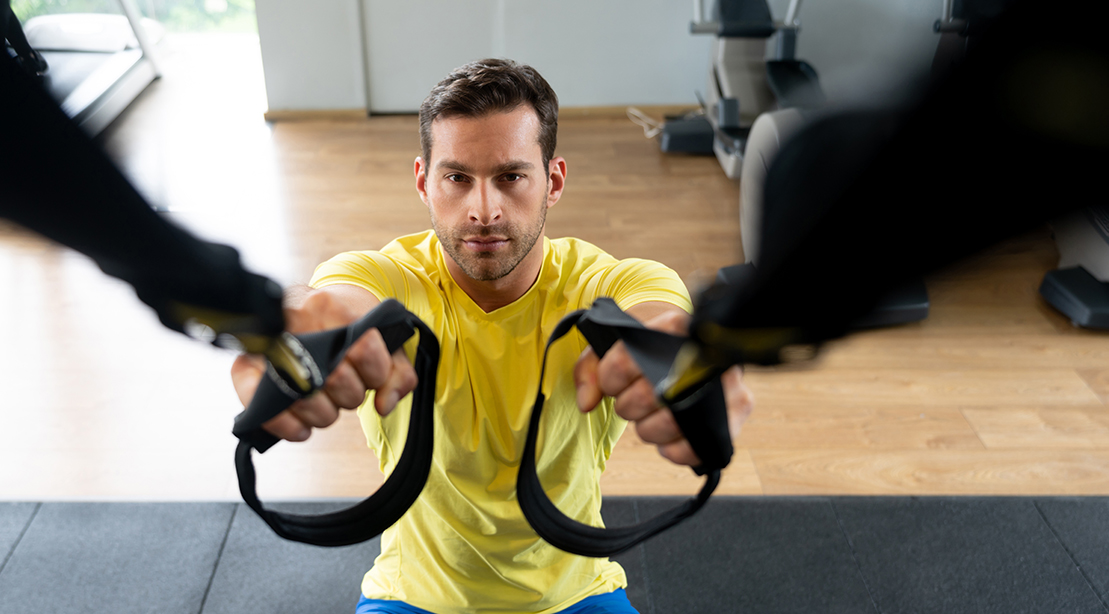
90/90 Shoulder Stretch / Suspension Trainer Y
1A. 90/90 SHOULDER STRETCH
Why it works: You don¡¯t want to start a shoulders workout without addressing the impact they¡¯ve taken from sitting all day, likely rounding forward. This stretch opens your shoulders while stretching the muscles of your middle and upper back.
How to do it: Lie on the ground on your left side with legs tucked into the torso at a 90-degree angle. Keep both arms straight, parallel to your knees. Keeping the knees together and on the ground, rotate your chest and right arm to the right, putting your back on the ground. Hold for two seconds and return to starting position.
Prescription: 2 sets of 10 reps to each side.
1B. SUSPENSION TRAINER Y
Why it works: This move not only strengthens the back and shoulders, but also counteracts the effects of sitting by pulling your shoulders back and down where they belong. That¡¯s especially important in this first superset. It¡¯s also a brilliant way to target your rear deltoids with only your bodyweight.
How to do it: Stand facing a suspension trainer, knees slightly bent, holding a handle in each hand. Your arms should be overhead to form a Y with the trainer hanging diagonally. Lean backward, initiating the movement with your shoulder blades. Make sure you keep your elbows slightly bent, and that you don¡¯t round your back. Return to starting position. If you need to make the move slightly easier, stand more upright; if you want to make it more difficult, lean back farther at the start of each rep.
Prescription: 2 sets of 10 reps.
2 of 5
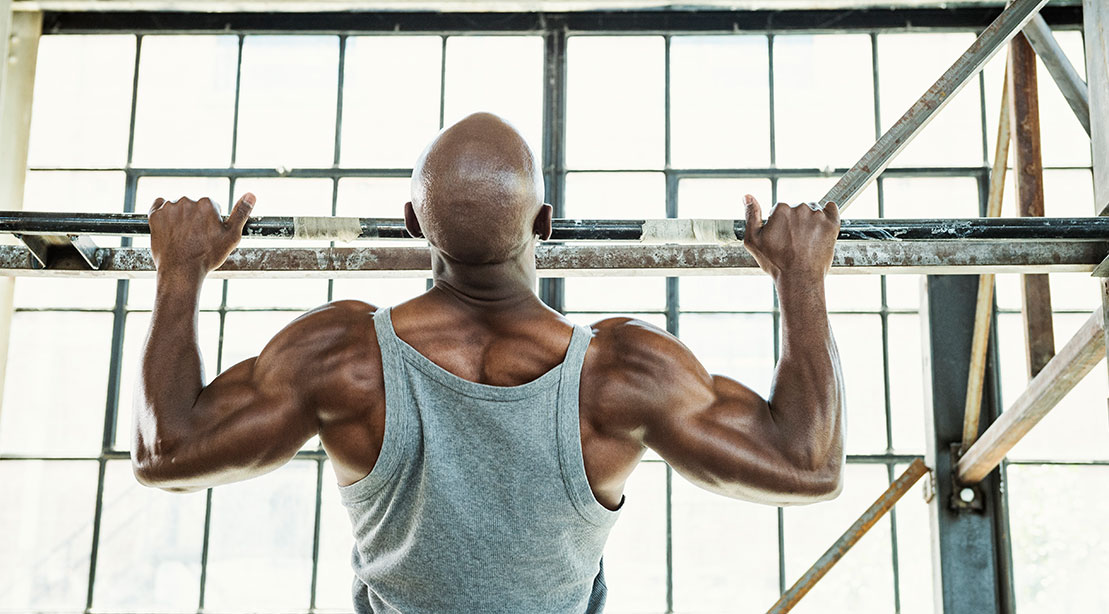
Alternating Dumbbell Bench Press / Pullups
2A. ALTERNATING DUMBBELL BENCH PRESS
Why it works: The dumbbell press challenges the shoulders to stabilize more than a barbell bench does. The extra pulse at the end also works the shoulders.
How to do it: Lying faceup on a bench, holding dumbbells at the outside of your shoulders and with palms facing your thighs, lift both dumbbells over your chest. Keeping one arm straight, lower the other dumbbell, touch the outside of your shoulder, and push it back up. At the top of the movement, push farther with both hands, as if you¡¯re trying to punch the ceiling.
Prescription: 2 sets of 10 reps.
2B. PULLUPS
Why it works: Pullups often are cast as a back, chest, or even biceps exercises¡ªand yes, pullups do work all of those areas. But if done properly, by squeezing the shoulder blades back and down, the pullup also really works the shoulders and traps.
How to do it: Grab the bar with an overhand grip. Hanging from the bar, pull your shoulder blades back and down to lift your body up and build momentum. Finish by pulling up with your arms. Don¡¯t kick or bend your knees¡ªkeep your legs straight and your toes pointed.
Prescription: 2 sets of 10 reps (or as many as you can).
3 of 5
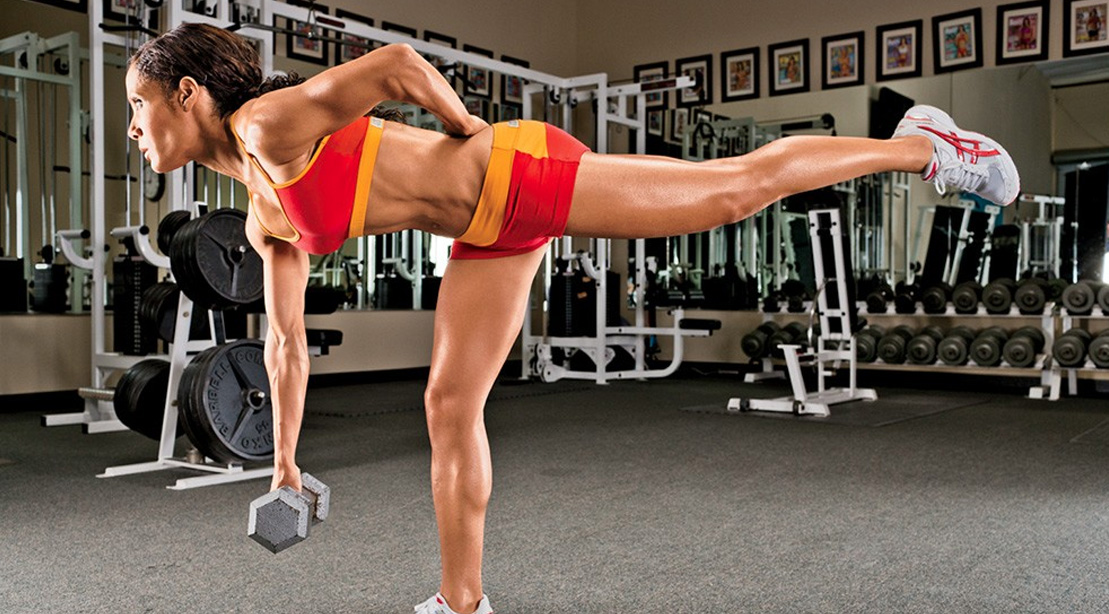
Reach, Roll, and Lift / One-Arm, One-Leg Dumbbell Row
3A. REACH, ROLL, & LIFT
Why it works: A variation on yoga¡¯s familiar child¡¯s pose, this stretches your shoulders and upper back.
How to do it: Set up as if you were about to use an abs roller (kneeling on the floor, arms extended in front of you) except with a foam roller. Sitting on your heels, extend your arms and the back of your hands forward. Roll the foam forward while keeping your hips back, dropping your chest toward the ground. Lift and hold the stretch for two seconds. Return to starting position.
Prescription: 2 sets of 10 reps.
3B. ONE-ARM, ONE-LEG DUMBBELL ROW
Why it works: This total-body exercise works the hamstrings and lats, but the deep row targets the shoulders, too.
How to do it: Stand on one leg, gripping a stable surface in front of you (perhaps the dumbbell rack) with one hand. Bend by dropping your chest and lifting the leg opposite your free hand. Grab a dumbbell with your free hand. Pull it to the side of your waist and then lower it. Do 10 and switch sides.
Prescription: 2 sets of 10 reps per side.
4 of 5
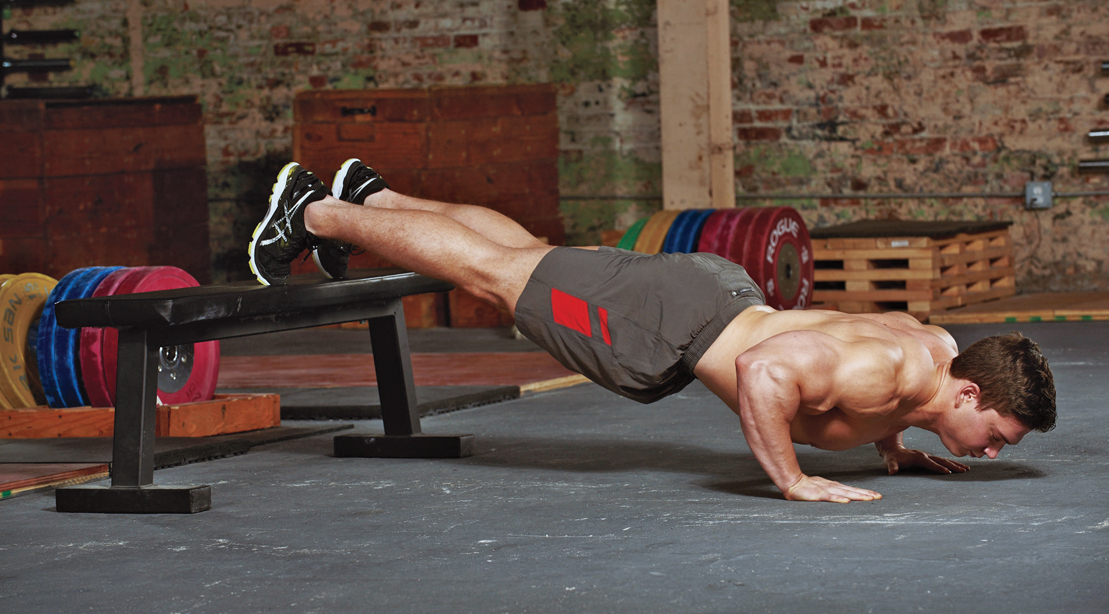
Suspension Trainer W / Feet-Elevated Pushup
4A. SUSPENSION TRAINER W
Why it works: Like the Suspension Trainer Y, this move strengthens the back and shoulders by pulling your shoulders back and down where they belong.
How to do it: Stand facing a suspension trainer, knees slightly bent, holding a handle in each hand. Your elbows should be bent 90 degress, forming a W with your torso so the trainer hangs diagonally. Fire your shoulders and back as you lean backward. Initiating the movement with your shoulder blades, pull yourself back up to the starting position. Make sure you maintain a 90-degree angle in your elbows.
Prescription: 2 sets of 10 reps.
4B. FEET-ELEVATED PUSHUP
Why it works: This version of the pushup places more emphasis on working the shoulders.
How to do it: Assume pushup position with your feet on a stair, bench, or Swiss ball. Lower while inhaling until your chest nearly touches the floor. Exhale as you push back up.
Prescription: 2 sets of 10 reps.
5 of 5
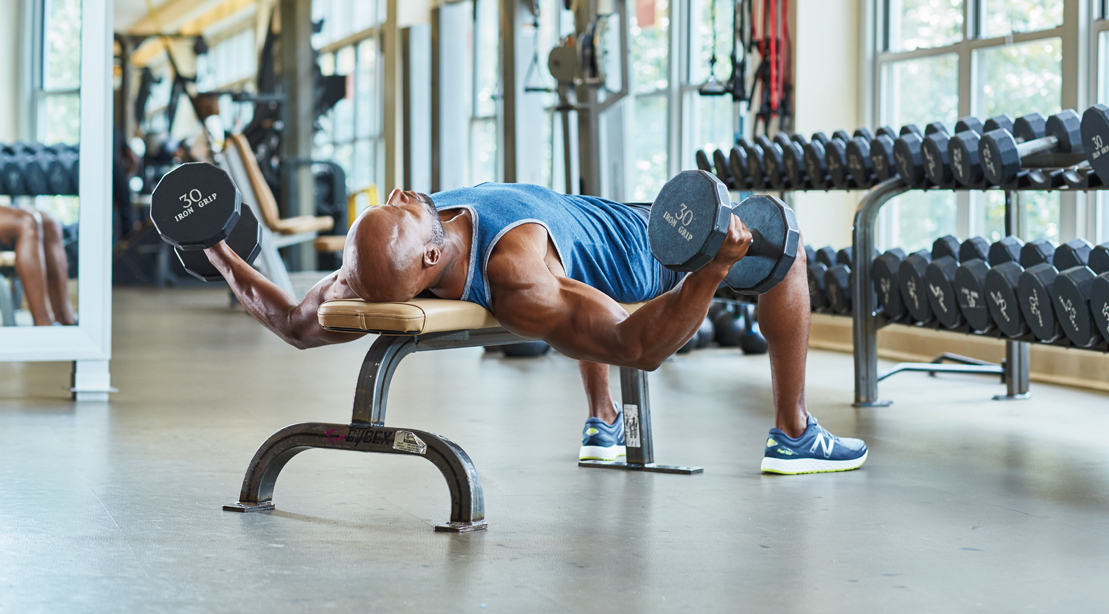
Dumbbell Flye / Side-Plank
5A. DUMBBELL FLYE
Why it works: Though a reliable chest/pecs standby, this also works the deltoid, especially if you maintain proper form.
How to do it: Lie supine on a flat bench, holding a pair of dumbbells over your chest with elbows slightly bent and palms facing each other. Separate your hands, and lower the dumbbells to the sides until you feel a stretch in your chest. At the bottom of the movement, your palms should face the ceiling. Fire your pecs and lift the dumbbells until you reach the starting point, a movement some liken to hugging a barrel.
Prescription: 2 sets of 10 reps.
5B. SIDE-PLANK
Why it works: Your shoulders support this movement as they do with so many movements in life.
How to do it: Start on the ground on your left side, with your left forearm on the ground and your elbow under your shoulder. Push up off your elbow, creating a straight line from ankle to shoulder. Your hips should be off the ground, and only the side of your bottom foot and your elbow should be on the ground. Hold for 30 seconds.
Prescription: 2 sets.
Pete Williams is a NASM-certified personal trainer and the author or co-author of a number of books on performance and training.

